Microtransactions: Pirating the Novel and Memberships and Twitter
May 16th, 2009

Pirating the Novel
There’s a .txt file that resides in a folder on my desktop ironically labelled ‘Desktop’. This text file has a list of three things; my backlog of games to buy, current-gen games I need to buy when they hit the cheap and an exhaustive list of second-tier titles that I’d like to invest in, if time allows. I sometimes swoon over this list, as well as that sheet of ‘Games to Complete’ that I sometimes refer to; the one above my monitor. Sometimes it’s better to envision yourself enjoying these games/write about them rather than actually go to the labour of playing them. Hmmm…
Anyways, I was running through my list and came across an aggravating tick of a game. I love the thrill of collection and bargaining, infact I have a couple of eBay titles qued up right now awaiting the snipe, but some games no matter where you find them refuse to budge from their steep price tags. One of those is Metal Gear Solid Digital Graphic Novel for the PSP. Ever since I first spotted this in store – and by golly, what a surprise! – it’s remained fixed at $AUD50+. It’s $20/30 (not sure what the going rate on PSP games is nowadays, always cheaper than DS though) shy of a full price title, yet in reality, this is a mostly non-interactive experience, similar to those interactive DVD games, so why the premium? Furthermore this title was blessed with an ultra limited released and overall lack of publicity – you had heard of this game before right? So Digital Graphic Novel puts me in a tight spot, difficult to find and when you do it’s top dollar.
So then I decided to go to YouTube to see if I could find some video and save myself the $50, and sure enough I found a 16-part playlist (woah – almost 3hrs!) that now resides in .mp4 on my desktop, next to the ‘Desktop’ folder.
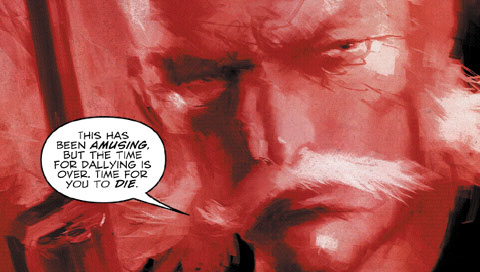
I’m morally split on the decision though, I mean, if I choose to watch these videos, will it be a form of piracy? A devious, devious sin that I avoid as much as possible. Truth is, I will watch the videos, but more concern lies in the classification of this activity. These videos are on a free to view website and openly available. If one classes MGS DGN as a game then therefore watching the video is the same as watching a play through and there’s nothing wrong with that at all. Games are interactive media and there is a layer of interactivity involved which I’d be missing out on, so no worries, right? Then again, I don’t think there will be any glimpses of gameplay in the video (ie. the player will just watch), so in that case we’re effectively watching a long cutscene which makes up the bulk of the game. Now if this is the case then what percentage of Metal Gear Solid 4 (ie. the cutscenes) is available online? Well there’s no doubt a montage of that stuff too, so probably a good chunk, therefore what exactly does this all mean? And what’s fair game?
One could also make the same claim for Linger in Shadows, the PS3 interactive short.
Memberships and Twitter
I recently ranted on about pissant membership groups within the blogging community in a post that I dare not upload in fear that you’ll hate me more than my Australian spelling of colour. Embedded within the article were some rather fantastic (if I do say so myself) musings on Twitter’s role in all this kerfuffle. Take a read;
“Twitter, is the fertile soil to plant, grow, share and trade cultural norms – the medium in which is used to emit and transfer. In fact Twitter is more than just the medium, it’s the ideal medium. The social networking element keeps tweeters in touch on a minute-by-minute basis while not binding them to any real time conversation. The tight word count moderates each sentence making it low fluff and straight to the love. The response system flaunts replies to people within the same network. This whole setup is ideal for users to flirt and trade ambiguous nudge, nudge, wink, wink commentaries among each other, and then transmit their dialogue to onlookers. It’s a contained system, built around the utterance; a distilled cultural transmitter. As said to death in the cultural studies field, language = culture. Therefore Twitter’s composition is a fantastic, quantifiable way to observe memberships groups validating their cultural identity between one another. It’s in Twitter that I draw much of my reasoning as it’s a transparent model to view this culture.
When I cruise through other people’s Twitter pages and observe the small talk, I’m often baffled at what’s actually going on. People declaring their membership roles or attempting to grow their seed, by throwing strings of replies to others. It’s a society alright. A society where people are constantly stating their roles and relationships. To “fit in” people have to acknowledge the presence of a membership group, whether they’re in it or not. And with only 140 characters to play with, you need to be discrete about this, which is where the love letters, and ultimately masturbation comes into play. In Twitter, if you want to be part of the elusive membership group you have to wank it all up on an open stage, and therein lies my frustration, as the audience member of that stage.”
Wow, witty and a valid contribution to the language, tech and culture fields. How do I do it? 😛
Game Boy Memories Part #4
May 9th, 2009

More to Come
The upright, grey brick may have already received its inauguration into the 20-Somethings, but it’s life is hardly over, at least for me anyways! While I’m rather up to date with the compulsory, must-play portable titles, there are a few holes that I’m still hoping to plug as well as a handful of titles that I’m simply curious to explore. Maybe you can lend a hand?
Peering over my laptop screen I can see Wario Land III, Metroid II, Kirby Tilt and Tumble (might give Kirby a miss) and Legend of the River King that all need proper play throughs. I unfortunately missed out on most of those titles the first time around. Actually Kirby T&T is imported, never came out in PAL regions, maybe I ought to give it a shot, I’m weary of having to wiggle around the GBC though, will likely hinder vision.
On the GBA I’d like to replay the two Pokemon titles as well as the excellent Kuru Kuru Kurrin which is more difficult than I remember it. On top of these three are Mario Kart Super Circuit (turned this down originally, gasp!), Castlevania Double-Pak and Fire Emblem: Sacred Stones, the last two which I’ve kinda started. Wow, certainly some heavy hitters to look forward too.
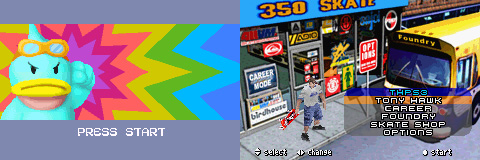
This post isn’t intended to brag about titles already within my possession though. I hate materialism, and don’t wish to whine over unfortunate dilemmas like which games I intend on playing next. Seriously, people complained about this issue last Christmas, if they don’t like having so much to play, maybe they can sell their unused games to clog up retail chains. I want to instead spew out a list of names that interest me, maybe if you’ve had some experience yourself, you can pitch in with ideas/suggestions.
As one of the few people to pimp ambitious portable developer Vicarious Visions, I’m interested to go hands on with one of the seven (is it really seven?!) isometric iterations of the Tony Hawk franchise. I remember the fuss surrounding THPS2 at the GBA launch, the hype leveling it with PSone quality graphics. That’s obviously a lie, but the titles are still a technical milestone.
Metal Gear Solid on the GBC is a game that I also ought to add to my collection. This game has received unanimous critical acclaim, and before GTA IV and the Orange Box ever showed up, MGS GBC was firmly holding a position in GameRankings top 5 best titles. I hear there’s an Aboriginal villain in it too!
My brother and I are avid fans of the Harvest Moon franchise, yet we’d dare touch anything but the sacred SNES original. Even though the quality of the newer titles tends fluctuate a little, the series appears to have evolved respectably, still that doesn’t shake hardened fans like us. I’m curious though, with the exception of the off-shoot Rune Factory series, how do some of the games stack up? The GBC titles seem interesting place to ponder that question.

Lastly, I am dying to play (probably through emulation, I suspect) Stranded Kids or Survival Kids, I’m not sure which is the PAL/NTSC name here. This GBC game is the precursor to the Lost in Blue series. I’ve been intrigued by this RPG since I first caught eye of it in NMS magazine, yet I’ve never seen it on store shelves. The premise seems to place the game in the same obscure, life-RPG niche as Harvest Moon and Legend of the River King.
And that concludes this week’s Game Boy retrospective. I wish this was done and dusted last we, but sometimes time doesn’t permit. I hope you’ve enjoyed reading it as much as I’ve enjoyed writing it. For now we return to the regular broadcasting content.
All images used in this series proudly swiped from MobyGames
Was the Game Boy Color a Flawed Product?
April 23rd, 2009
Last Monday, the Good Game team did a short retrospective on the Game Boy console, after all this year is the system’s 20th anniversary. In fact, a few publications ran articles covering the console’s history including MTV Multiplayer and the Retronauts blog, I suggest you check them out.
The reason why I mention all this is because I’ve been thinking about the Game Boy Color and something that was said in the recent Good Game segment (you can watch here, episode 11). When running through the various Game Boy iterations, presenter Junglist mentions that the console was rather short-lived. Short-lived? Hmmm…really?
And since then I’ve been thinking about the GBC and wondering if it really was that(italics) successful. The system lasted almost 3 years before being superseded by the Game Boy Advance . Not a very long time when you frame it in that light. I never owned a GBC myself, instead relying on my Gameboy Pocket and the B&W titles for both platforms, later then playing catch ups with the Gameboy Advance. I remember the software line up being fantastic, Wario Land 3, Zelda Oracles, Pokemon Gold/Silver, Tomb Raider and Metal Gear Solid are all great examples. In a few short years the GBC had a line up of games that were perhaps better than the first decade of Game Boy software.
I’m going to throw this question out to the audience for a consensus. Was the Game Boy Color are real success? And how does it compare to the original Game Boy?



 Game Design Companion: A Critical Analysis of Wario Land 4 - $7.99
Game Design Companion: A Critical Analysis of Wario Land 4 - $7.99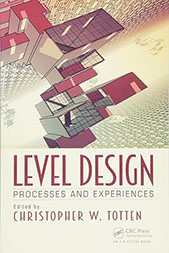 Level Design: Processes and Experiences
Level Design: Processes and Experiences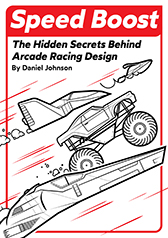 Speed Boost: The Hidden Secrets Behind Arcade Racing Design - $5.99
Speed Boost: The Hidden Secrets Behind Arcade Racing Design - $5.99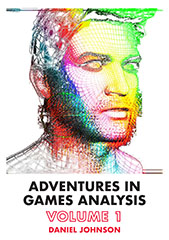 Adventures in Games Analysis: Volume I - $5.99
Adventures in Games Analysis: Volume I - $5.99







